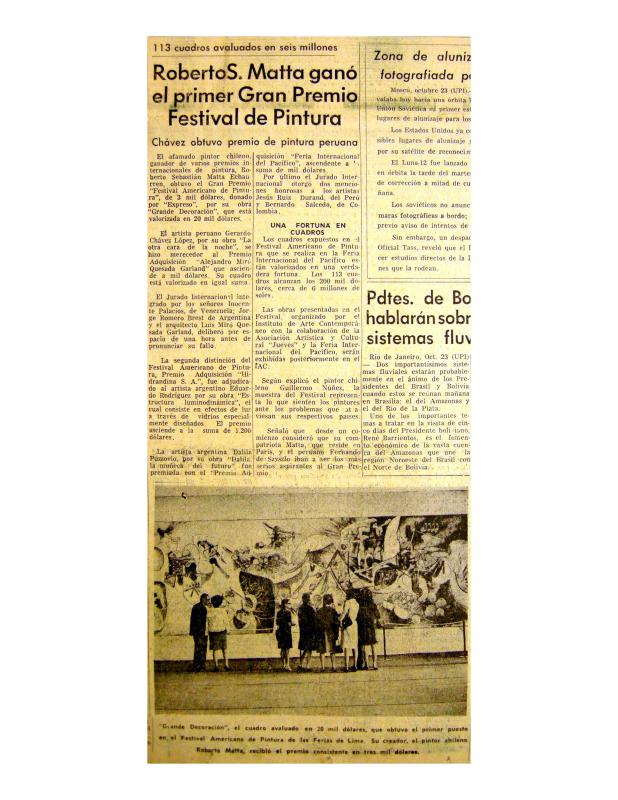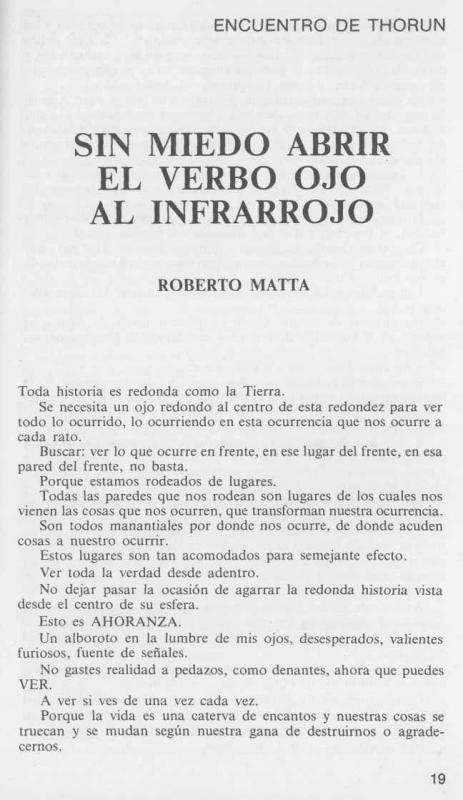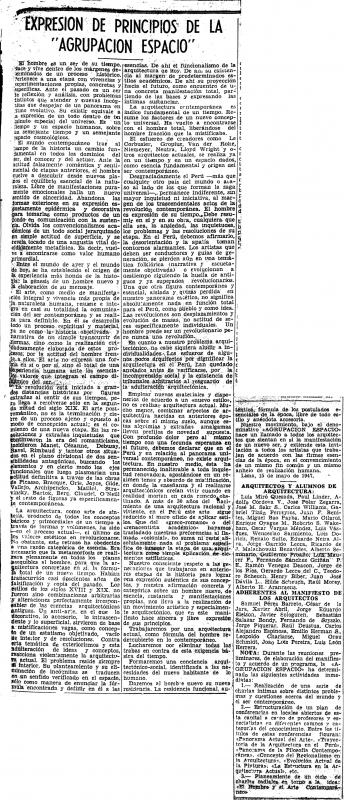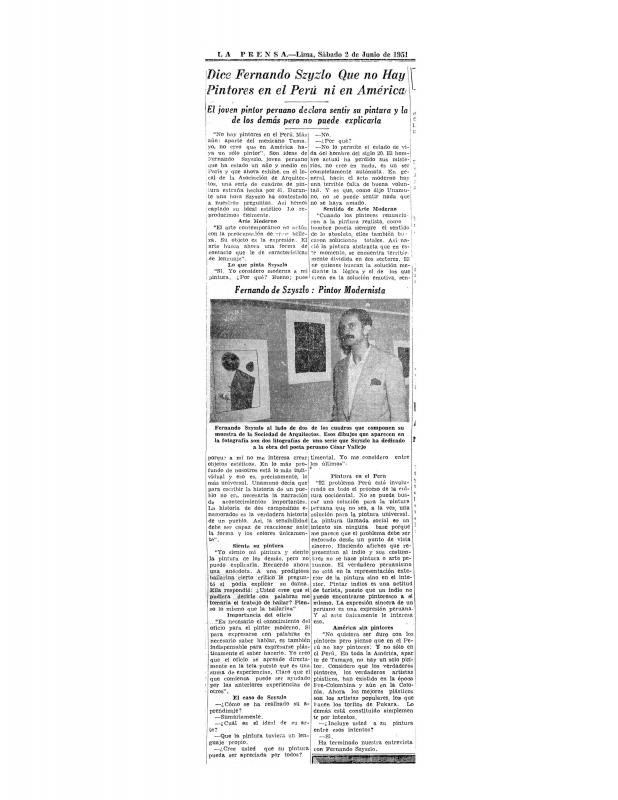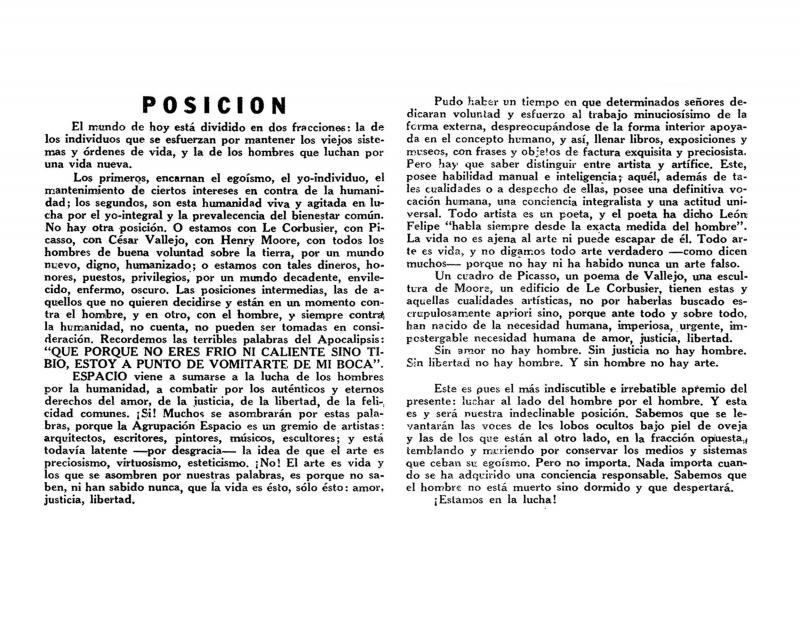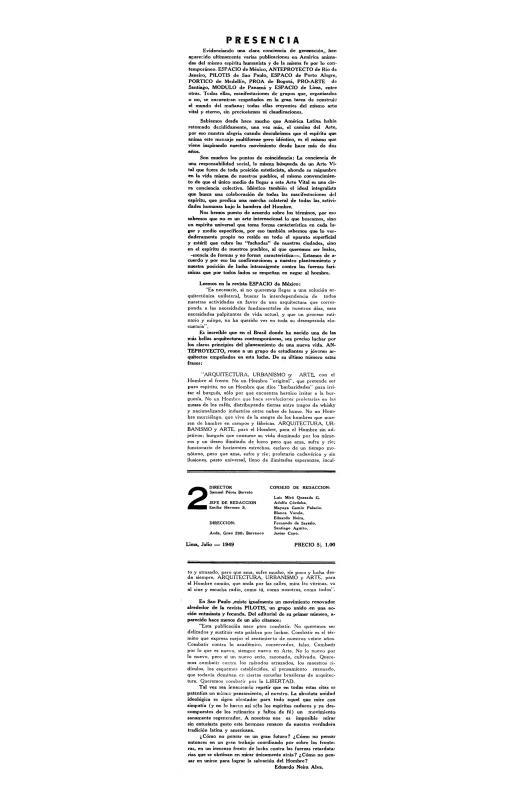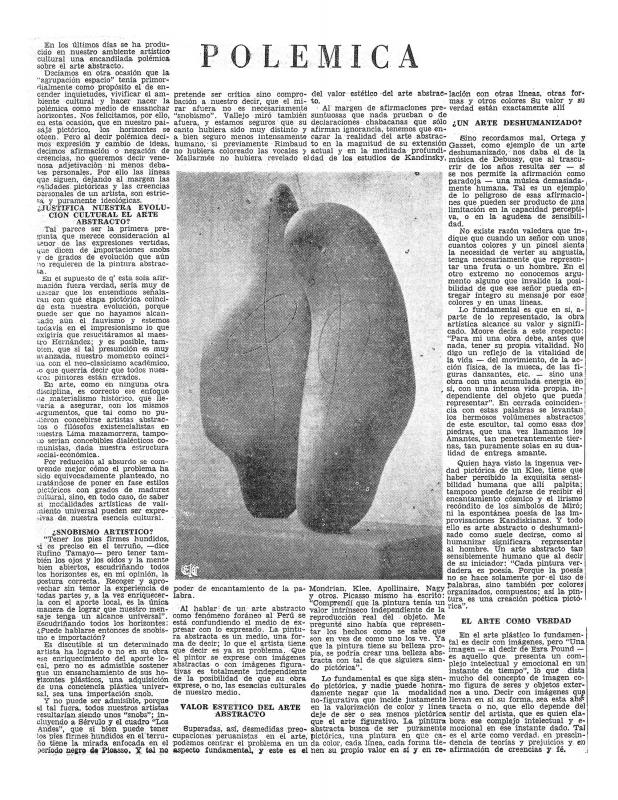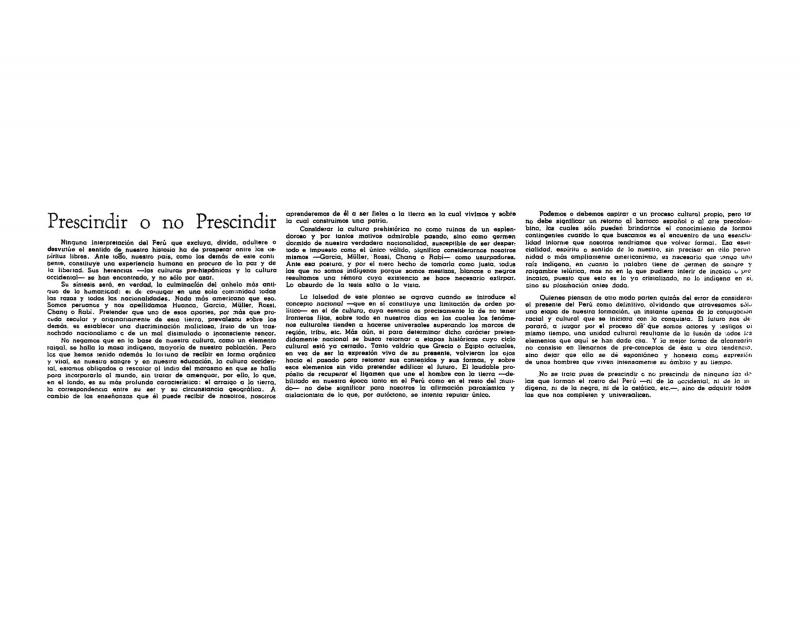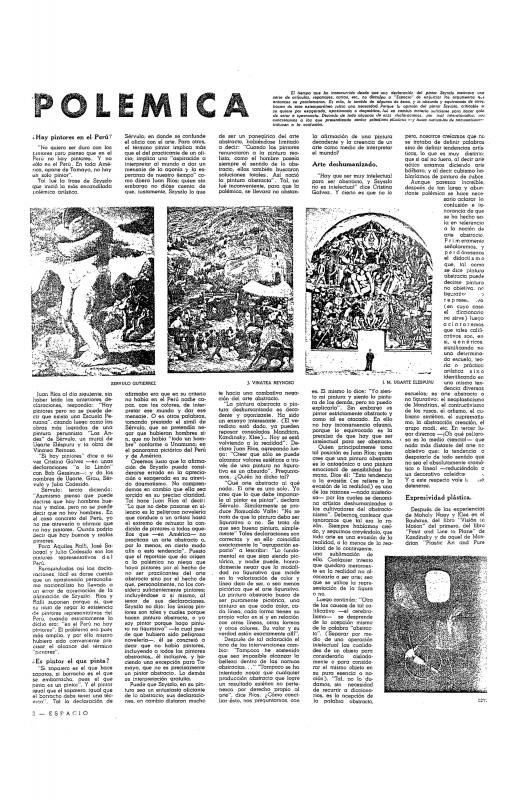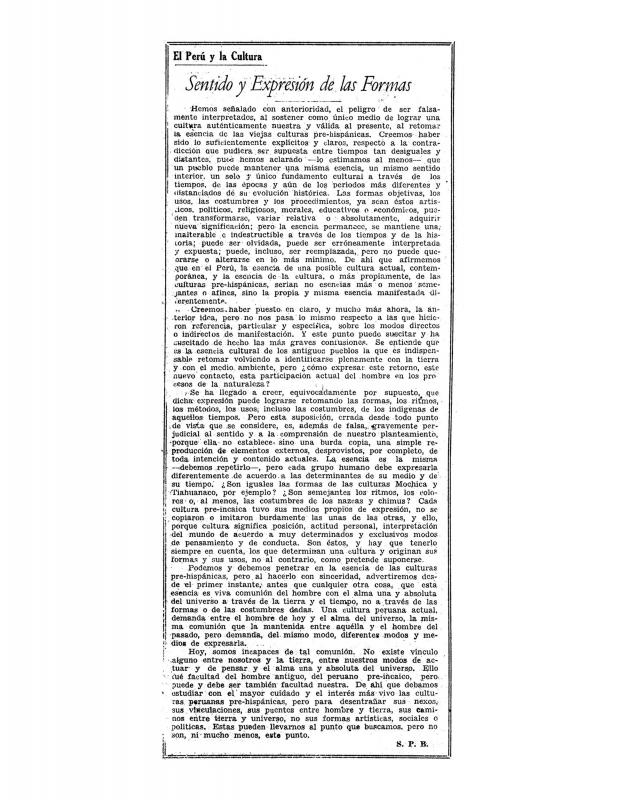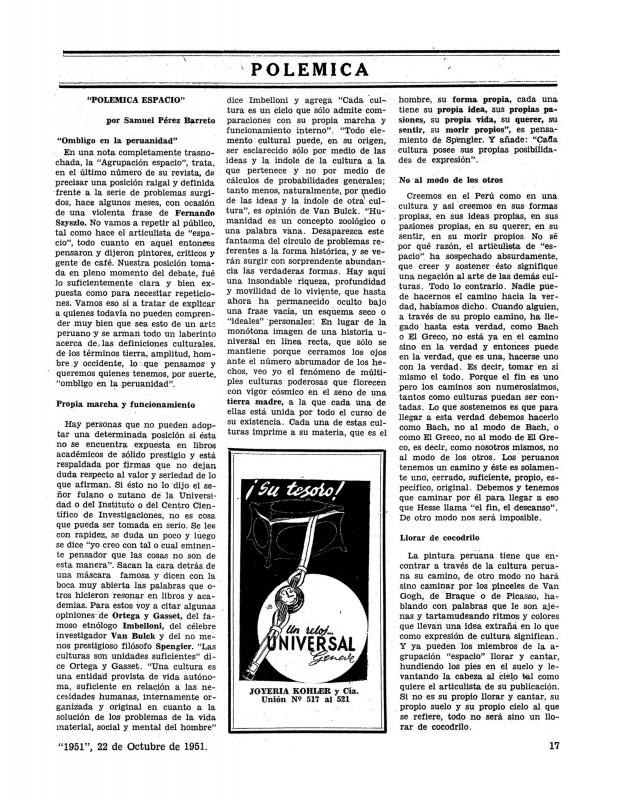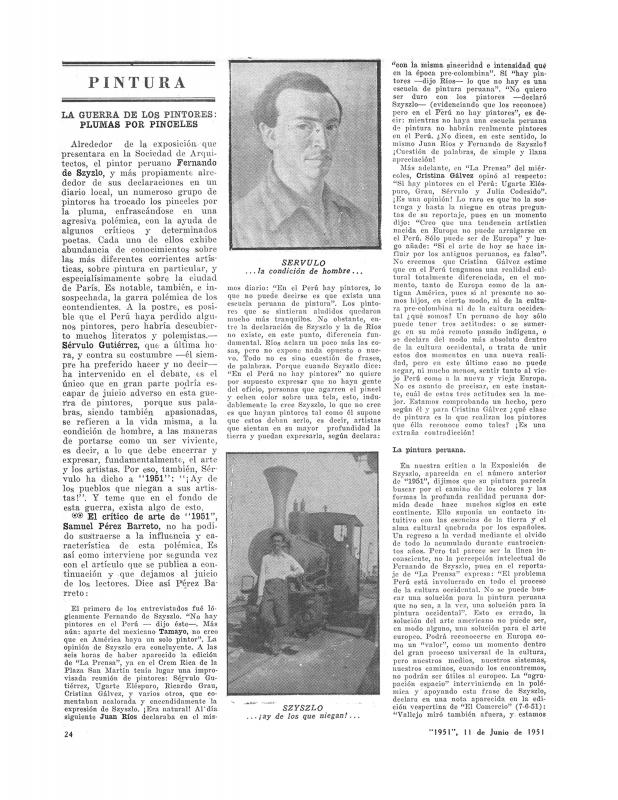On April 12, 1954, an exhibition of work by Roberto Matta (1911–2002) opened in Lima. Before the opening—which the artist himself attended—a number of comments on his importance to the Latin American art scene were made. The show launched an ambitious season at the Galería de Lima—the center of the local art scene in the fifties; it was organized by that venue’s director, Francisco Moncloa, after his return from Europe. Matta’s bold figurative language was largely condemned by local critics, who questioned the quality of the production of the works. Peruvian writer and critic Sebastián Salazar Bondy (1924–65)—who would become the main opponent of abstract art in Peru—however, saw in Matta’s work the creation of “new terms of representation.” He praised the Chilean painter as an example of modernism understood as constant questioning of convention that does not eschew the terms of figuration. Poet Sebastián Salazar Bondy was a crucial figure in the aesthetic debates that took place in Peru in the mid-20th century. At the beginning of his career, he was deeply engaged in two movements fundamental to Peruvian history. First, the democratic government of José Luis Bustamante y Rivero in power from 1945 to 1948; from the editorial board of the newspaper La Nación, Salazar Bondy supported that administration’s attempts to broaden political participation. Second, in 1947 he signed the manifesto released by the Agrupación Espacio, a document fundamental to Peruvian modern art and architecture. Shortly after the publication of that manifesto—but before Bustamante y Rivero’s administration was ousted and the dictatorship under General Manuel A. Odría that would hold power from 1948 to 1955 put in place—he left for Buenos Aires. Though he was a contributor to the journal Espacio (1949–51), the platform of the group of the same name, the stance he voiced in “La poesía y el hombre” differed from the universalist formalism that the group embraced. Eventually—and particularly in the fifties—those differences led to open clashes with architect and critic Luis Miró Quesada Garland (1914–94), the primary framer of modernism in Peru. [For further reading on artist Roberto Matta, see in the ICAA digital archive the following documents: (unsigned) “113 cuadros avaluados en seis milliones: Roberto S. Matta ganó el primer Gran Premio Festival de Pintura: Chávez obtuvo premio de pintura peruana” (doc. no. 1142692); by Roberto Matta and Eduardo Carrasco “Matta: Conversaciones” (doc. no. 734949); by Teófilo Cid “Roberto Matta” (doc. no. 746778); and the interview with the artist by Enrique Bello “Surrealismo y libertad individual” (doc. no. 746748). See as well by Roberto Matta himself “Sin miedo abrir el verbo ojo al infrarrojo” (doc. no. 765447)]. [For further reading on the Espacio group and its publication Espacio, see the following articles: “Expresión de principios de la Agrupación Espacio” (doc. no. 1126309), and (unsigned) “Dice Fernando Syszlo que no hay pintores en el Perú ni América: el joven pintor peruano declara sentir su pintura y la de los demás pero no puede explicarla” (doc. no. 1137793). The following texts were written by the Agrupación Espacio itself: “Posición” (doc. no. 1143745), “Presencia” (doc. no. 1150278), “Polémica” (doc. no. 1137823), “Prescindir o no prescindir” (doc. no. 1138933), and “Polémica: ¿hay pintores en el Perú?” (doc. no. 1139402). See as well the following texts by Samuel Pérez Barreto: “El Perú y la cultura: Sentido y expresión de las formas” (doc. no. 1138491), “Polémica: ‘polémica Espacio’” (doc. no. 1137916), and “Pintura: la guerra de los pintores: plumas por pinceles” (doc. no. 1137839)].

